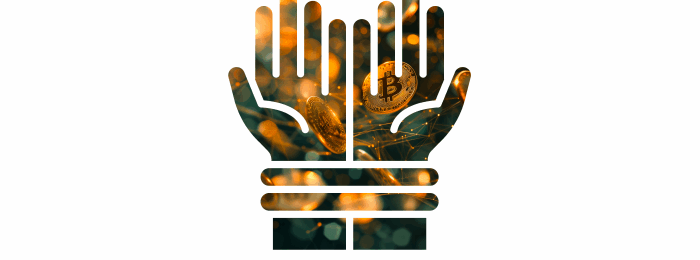
With an estimated $407 million in new spending, 125,000 visitors, 5,000 jobs created and $242 million created in wages in 2017 alone,1 the Super Bowl is more than just a game. It is the largest non-global annual sporting event, bringing hundreds of thousands of rowdy fans from across the world together to spend large sums of money. These out-of-town partiers stimulate local economies and are often harmless. However, they also attract more nefarious types of citizens into these host cities: those who lead and promote human trafficking (HT) rings.
HT is a multi-billion-dollar industry and a serious global issue that cannot be ignored. The Super Bowl has historically seen a huge increase in HT, particularly for sex trade targeting the spectators. As a result, the Super Bowl is often called the largest HT event in the world.
“The Super Bowl is the greatest show on Earth, but it also has an ugly underbelly,” former Texas Attorney General Greg Abbott told USA Today in 2011, “It’s commonly known as the single largest human trafficking incident in the United States.”2 While the now-Texas governor’s claim has been challenged, all major sporting events worldwide carry this dark side.
This article will define HT as a growing problem surrounding the Super Bowl and other major sporting events and raise awareness of the red flags of HT both for financial institutions and the general public in an effort to curb this crisis.
The U.S. Department of Homeland Security (DHS) defines HT as:3
- The act of recruiting, harboring, transporting, providing or obtaining a person for labor, services or commercial sex acts
- By means of force, fraud or coercion;
- For the purpose of exploitation, involuntary servitude, peonage, debt bondage, slavery or any commercial sex act involving a minor.
According to the DHS, HT is a form of modern-day slavery that may materialize in the form of sex trafficking, labor trafficking or both
According to the DHS, HT is a form of modern-day slavery that may materialize in the form of sex trafficking, labor trafficking or both. The United Nations reports that 2.4 million people across the globe are victims of HT4 at any one time. Eighty percent of those victims are forced into sexual slavery, half of which are children.
Financial institutions, and specifically the Bank Secrecy Act department, play an important role in preventing HT. However, following the flow of HT funds can be complex; the dollar amounts may be small and under the monitoring thresholds. In addition, determining the source of funds can be nearly impossible.
Also, it is difficult to determine the difference between movement of funds for the purpose of human smuggling and HT. The two terms are not interchangeable. Human smuggling is generally transportation-based, consensual and there is payment for services received. HT is exploitation-based and never consensual. Smuggling can turn into trafficking when the smuggler, or “coyote,” refuses to release the victim without further payment of funds or services, generally sex or labor.5
Cracking Down on HT at the Super Bowl
With increased demand for manual labor, sex for hire and other services around major sporting events, increases in reported HT around the Super Bowl, World Series and World Cup, among other events, are evident. Aristides “Harry” Jimenez, retired Deputy Agent in Charge at DHS, was instrumental in successful sting operations during the Super Bowl in Houston in February 2017. In an interview with Special Agent Jimenez,6 he stated that all major sporting events, particularly the Super Bowl, have a large increase in trafficking. He added that these “stables,” groups of trafficked victims who are under the control of a single pimp, travel from all major cities to the host site due to the demand being so high. During the DHS stings, the agents begin surveillance several days before the event and conclude during the tailgating festivities that lead up to the big game. According to Jimenez, large sporting events, including collegiate sports, are the largest coordinated efforts of movement in young victims within the U.S. Most of these victims are both male and female U.S. citizens, between the ages of 13-16.
In order to successfully identify victims, law enforcement begin efforts with nonprofit groups around the location of the event. They work with industries likely to see an uptick in illicit activity: hotels, rest stops, massage parlors, modeling agencies, lingerie retailers and adult entertainment clubs. They train the staff on trafficking red flag indicators, particularly in hotels, to identify what does not look normal, such as an older male accompanying young females or no trash pick-up or clean towels requested, signifying they never leave the room. The DHS also provides stickers with the trafficking hotline phone number to be placed on hotel toiletries and restrooms of other establishments since this may be the only time the victim is alone.7
According to the U.S. State Department, the following are additional HT red flags:8
- Common work and living conditions: The individual(s) in question
— Is not free to leave or come and go as he/she wishes
— Is under 18 and is providing commercial sex acts
— Is in the commercial sex industry and has a pimp/manager
— Is unpaid, paid very little or paid only through tips
— Works excessively long and/or unusual hours
— Is not allowed breaks or suffers under unusual restrictions at work
— Owes a large debt and is unable to pay it off
— Was recruited through false promises concerning the nature and conditions of his/her work
— Is subject to high security measures in work and/or living locations (e.g., opaque windows, boarded-up windows, bars on windows, barbed wire, security cameras)
- Poor mental health or abnormal behavior
— Is fearful, anxious, depressed, submissive, tense or nervous/paranoid
— Exhibits unusually fearful or anxious behavior after bringing up law enforcement
— Avoids eye contact
- Poor physical health
— Lacks healthcare
— Appears malnourished
— Shows signs of physical and/or sexual abuse, physical restraint, confinement or torture
- Lack of control
— Has few or no personal possessions
— Is not in control of his/her own money, financial records or bank account
— Is not in control of his/her own identification documents (ID or passport)
— Is not allowed or able to speak for themselves (a third party may insist on being present and/or translating)
- Other
— Claims to be just visiting and inability to clarify where he/she is staying/address
— Lack of knowledge of whereabouts and/or does not know what city he/she is in
— Has lost their sense of time
— Has numerous inconsistencies in his/her story
At the 2017 Super Bowl, a sting operation called Operation Guardian Angel yielded 94 HT arrests. The operation received 1,560 responses to sex ads placed by law enforcement during the 11-day period. Most of the victims trafficked were Asian women, which reflects regional sex trafficking trends.9
According to Jimenez, large sporting events, including collegiate sports, are
the largest coordinated efforts of movement in young victims
within the U.S.
During the prior year’s Super Bowl, a nationwide sting by U.S. law enforcement arrested 750 trafficking suspects,10 targeting those on both sides of the illicit sex trade. One hundred of these arrests were in Houston where the game took place; others around the country were targeted around the time of the event. Law enforcement reported that six minors and 86 adults were rescued as part of this 2017 sting.
As part of the sting operations, it is important to identify and rescue the victims to successfully prosecute a trafficking case. Jimenez also stresses that there must also be advocates for these victims because there is no such thing as “just a runaway” or “just a prostitute.” These victims are our daughters, sons and neighbors who have been groomed for this life, so they need our help to get away from a life of sexual exploitation.
The U.S.’ Role in HT
According to a report by the U.S. Department of State,11 the U.S. is compliant with the global anti-trafficking standards. However, they state that the U.S. “is a source, transit, and destination country for men, women and children subjected to forced labor, debt bondage and forced prostitution.”
It is no secret that the U.S. continues to be a large contributor in the demand to bring the supply of trafficked persons into the country. Victims are often U.S. citizens: children and teens who lack a social safety net and have been “rescued” by someone who turns around and trafficks them for labor and/or sex. HT is not an isolated problem in large cities. The DHS reports make it clear that it is in every community, in one’s own backyard and in plain sight.
Social media and other websites have been both a positive and negative tool in the effort to stop HT. While they have helped take many traffickers and victims off of the streets, they have also made trafficking easier. Law enforcement and citizens must be that much more diligent in watching for red flags.
Social media and other websites have been both a positive and negative tool in the effort to stop HT
So, how can financial institutions help?
HT is one of the more horrific illicit activities monitored by financial institutions, and one of the most important and difficult to detect for suspicious activity. There are specific red flags related to potential HT that anti-money laundering monitoring systems should detect, including:12
- Consistent use of cash with multiple cash withdrawals and transfers in small amounts to avoid identification or reporting requirements
- High volume of airline and hotel expenses, including excessive use of travel agencies
- Use of multiple bank accounts and credit cards, as well as multiple identities with common addresses
- Use of shell companies, falsified identity documents or not providing beneficial ownership information
- A lifestyle that does not match the customer/member’s known profile
- Relationships with known or suspected criminals
- High velocity cash deposits to ATM withdrawals or Automated Clearing House (ACH)/wire transactions
- High volume of fast food and Redbox (movies) purchases
- No proof of a licit business behind banking operations
When investigating suspicious activity, financial institutions only need to report the activity by means of a suspicious activity report (SAR). They can also make a call to law enforcement to bring it to their attention. They do not need to, nor should they, determine the exact nature of activity or prove that the transaction(s) in question are derived from illicit activity.
If an institution suspects HT, they must ensure that the SAR-writing procedures are thorough and inclusive
If an institution suspects HT, they must ensure that the SAR-writing procedures are thorough and inclusive. If HT is suspected, they need to check the applicable box on the SAR as well as include full information on why HT is suspected in the narrative. Institutions can be key in noticing and reporting suspected illicit activity, including HT. They provide key information to help unlock law enforcement investigations that lead to arrests related to HT.
Conclusion
There are simple ways everyone can help in the fight against HT. When traveling, be cognizant of what is going on in airports and hotels and report suspicious activity that may otherwise go unnoticed (i.e., multiple women being controlled by one person). File a SAR if HT is suspected at the institution and alert law enforcement. One does not have to be sure, one just needs to know it does not feel right. To make a report of possible suspicious activity, call the National Human Traficking hotline at 1-888-373-7888. This reporting method is anonymous and makes it very easy to help save a life.
It may seem like a daunting goal to deter HT, but step-by-step everyone can make a difference. Keep eyes open, report unusual activity and never give up in the fight against modern day human slavery. It is the right thing to do.
- “The Minneapolis-St. Paul Region Reaps the Rewards of Super Bowl LII,” Rockport Analytics, May 29, 2018, http://rockportanalytics.com/the-minneapolis-st-paul-region-reaps-the-rewards-of-super-bowl-lii/
- Eleanor Goldberg, “Super Bowl Is Single Largest Human Trafficking Incident In U.S.: Attorney General,” HuffPost, February 3, 2013, https://www.huffingtonpost.com/2013/02/03/super-bowl-sex-trafficking_n_2607871.html
- “Blue Campaign,” U.S. Department of Homeland Security, May 1, 2018, https://www.dhs.gov/blue-campaign
- “Human Trafficking: the facts,” United Nations Office on Drugs and Crime, https://www.unodc.org/documents/human-trafficking/UNVTF_fs_HT_EN.pdf
- “Money Laundering Risks Arising from Traffickig in Human Beings and Smuggling of Migrants,” Financial Action Task Force, July 2011, http://www.fatf-gafi.org/media/fatf/documents/reports/Trafficking%20in%20Human%20Beings%20and%20Smuggling%20of%20Migrants.pdf
- Aristides “Harry” Jimenez, phone interview, November 2018.
- Arne Sorenson, “Our hotels are fighting human trafficking, but we can’t do it alone: Marriot CEO,” USA Today, February 19, 2018, https://www.usatoday.com/story/opinion/2018/02/19/our-hotels-fighting-human-trafficking-but-we-cant-do-alone-arne-sorenson/336959002/
- “Recognize the Signs,” Polaris, https://polarisproject.org/human-trafficking/recognize-signs
- Mara H. Gottfried, “Police go on offense during Super Bowl, nab 94 men in sex trafficking stings,” Pioneer Press, February 20, 2018, https://www.twincities.com/2018/02/20/police-go-on-offense-during-super-bowl-nab-94-men-in-sex-trafficking-stings/
- Sebastien Malo, “Is the Super Bowl really the U.S.’s biggest sex trafficking magnet?” Reuters, February 1, 2018, https://www.reuters.com/article/us-football-nfl-superbowl-trafficking-an/is-the-super-bowl-really-the-u-s-s-biggest-sex-trafficking-magnet-idUSKBN1FL6A1
- “Trafficking in Persons Report June 2018,” U.S. Department of State, June 2018, pp. 442-443, https://www.state.gov/documents/organization/282798.pdf
- “Tracking Suspicious Financial Activity to Address Human Trafficking,” U.S. Department of State, June 28, 2018, https://www.state.gov/j/tip/rls/fs/2018/283549.htm










